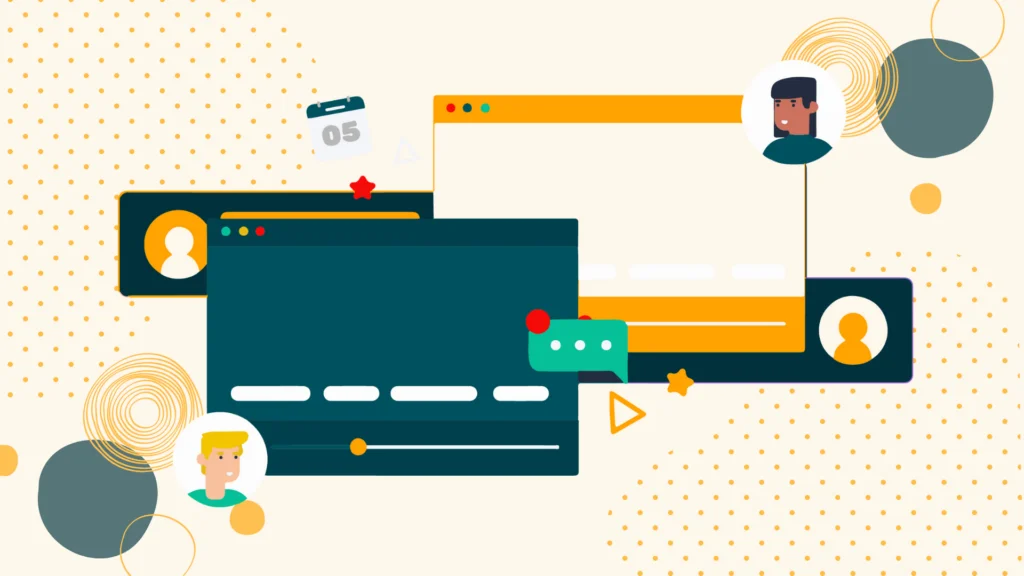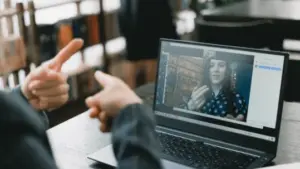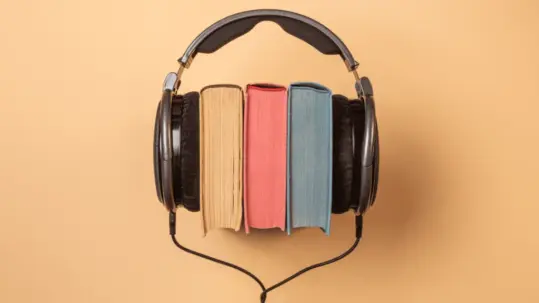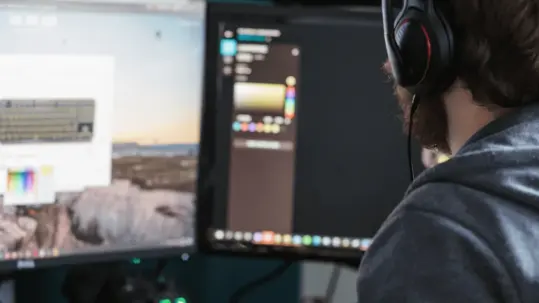
28 Jul Audiovisual translation for the deaf and hard-of-hearing: how it works and why it is important
Audiovisual translation for the deaf is a rapidly growing field in the area of accessibility of multimedia content. In this article, we will explore the importance of audiovisual translation for the deaf and some types of translation that allow audiovisual content to be made accessible and fully understood.
The importance of audiovisual translation for the deaf and hard-of-hearing
Audiovisual translation for the deaf and hard-of-hearing is a process that aims to make audiovisual content, such as videos, TV series and films, accessible to deaf people. With this form of translation, the information in the audio is conveyed through text or visual signs, enabling people with hearing disabilities to fully understand the content. This is achieved through the use of subtitles, sign language and audio descriptions.
Accessibility is a fundamental principle that should guide the development of digital content. It is crucial to ensure that people with hearing disabilities have the same opportunity to access and benefit from audiovisual content as the rest of the population. Without proper access to such content, they risk being excluded from this world and missing out on valuable information, entertainment and learning opportunities.
Audiovisual translation for the deaf is a key solution to overcome these communication barriers. Beyond the practical aspect, accessibility for people with hearing disabilities demonstrates a commitment to an inclusive society that respects and values diversity. Making audiovisual content accessible to all, regardless of hearing ability, is a significant step towards greater equality.
Types of audiovisual translation
There are three main types of audiovisual translation, which make multimedia content usable and accessible to people with hearing disabilities. In the following paragraphs, we will outline their characteristics.
1. Subtitling for the hard of hearing
Subtitling for the deaf and hard-of-hearing is one of the most common techniques used in audiovisual translation to guarantee the accessibility of video content. It consists of inserting synchronised text at the bottom of the screen, providing a transcription of the dialogue, including sound effects. There are several techniques used in subtitling for the deaf and hard-of-hearing, including:
– Standard subtitling: subtitles are present throughout the video and are synchronised with dialogue takes and pauses.
– Fast-paced subtitling: subtitles are displayed for a shorter time than in standard subtitling to allow for faster reading.
– Simplified subtitling: subtitles are adapted to provide an abbreviated version of the dialogue, facilitating fast reading.
Subtitling for the deaf and hard-of-hearing offers numerous advantages. It allows people to follow and understand the dialogue and sound elements in the video. However, it has some limitations. For example, subtitles can have limited available space, which requires effective synthesis of information. In addition, they do not convey visual information such as facial expressions, gestures or visual details that are essential for complete understanding of scenes.
2. Audio-description
Audio-description is a technique used to provide additional visual information to people with hearing disabilities when viewing audiovisual content. It consists of a detailed description of scenes, visual elements, facial expressions and gestures in the video. The purpose of audio descriptions is to offer a complete understanding of the images and visual atmosphere of the content.
To create effective audio-descriptions, several strategies are used. These may include using pauses in dialogues to allow for description, inserting descriptions between dialogues or using separate voices for narration of the audio-description. The aim is to ensure that the descriptions are synchronised with the audio-visual content, without interfering with the dialogues and maintaining a clear and engaging narrative.
 3. Sign Language
3. Sign Language
Sign language plays a key role in audiovisual translation for the deaf and hard-of-hearing. It allows dialogues and communicative elements to be conveyed through the use of gestures, facial expressions and body movements. Through sign language, the interpreter translates the dialogues in the audio, offering people with hearing disabilities the possibility to understand and participate in conversations visually.
In the context of audiovisual content, it is important to consider some aspects regarding sign language interpretation. For example, interpreters must pay attention to the synchronisation of sign language with audio and subtitles to ensure a consistent and comprehensible experience. Furthermore, the choice of interpreter and his/her competence in the sign language used in the video are crucial to ensure an accurate and high-quality translation.
Rules to follow
Before carrying out an audiovisual translation for the deaf and hard-of-hearing, it is essential to bear in mind a few essential rules to ensure the quality and effectiveness of the communication. Following these rules will help you create accessible and inclusive content for a wider audience.
– Accuracy and clarity: accuracy is a key element in audiovisual translation for the deaf and hard-of-hearing. It is important to translate the original content accurately, preserving the integrity of the message and its original intention. Every word, phrase or expression must be carefully considered to ensure that the meaning is conveyed as accurately as possible. Clarity is equally crucial. The translation must be clearly formulated, using simple and understandable language, avoiding ambiguities or confusions that could compromise the understanding by the deaf and hard-of-hearing audience.
– Adaptation and contextualisation: in audiovisual translation for the deaf and hard-of-hearing, it is important to adapt the text to the cultural and linguistic specificities of the target audience. This involves using appropriate terminology and adapting idiomatic expressions so that they are familiar and understandable to the target audience. Furthermore, contextualising information is essential to ensure complete and accurate comprehension. Detailing the visual information in the video and offering context and additional explanations allows people with hearing disabilities to fully grasp the atmosphere, emotions and visual elements in the content.
 – Collaboration and consulting: in order to achieve quality audio-visual translation for the deaf and hard-of-hearing, it is important to involve experts in the field and consultants who can offer a competent and in-depth perspective. Consulting people with hearing disabilities themselves and sign language interpreters can provide valuable insight into the specific needs of this audience.
– Collaboration and consulting: in order to achieve quality audio-visual translation for the deaf and hard-of-hearing, it is important to involve experts in the field and consultants who can offer a competent and in-depth perspective. Consulting people with hearing disabilities themselves and sign language interpreters can provide valuable insight into the specific needs of this audience.
Feedback from deaf and hard-of-hearing people is particularly important to improve the translation and adapt it to their specific needs. Furthermore, teamwork and collaboration between translators, proofreaders, experts and deaf and hard-of-hearing people themselves are crucial to produce accessible audiovisual content that meets everyone’s expectations and needs.
In summary, audiovisual translation for the deaf and hard-of-hearing is crucial to ensure accessibility and inclusion of multimedia content. Thanks to subtitling, audio description and sign language, people with hearing disabilities can access audiovisual content without barriers.
If you need audio-visual translations for the deaf and hard-of-hearing, contact us and we will find the right solution for your needs. Promoting accessibility is an important step towards a more inclusive society that values diversity. Audiovisual translation can be a powerful tool to create engaging and meaningful experiences for a wider and more diverse audience.





